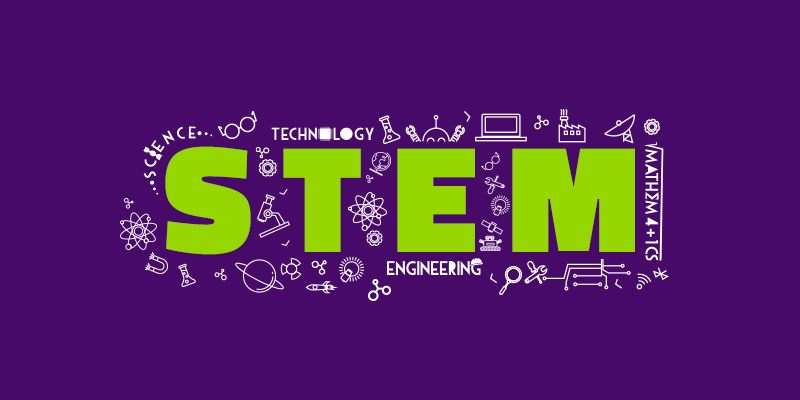You have probably seen or heard news reports about STEM education (Science, Technology, Engineering, and Math), and how important STEM jobs are for the economy; or maybe you’ve heard reports on schools that are making strides to improve their STEM programs for kids. It’s important for parents with school-aged children to fully understand what a STEM education is and why access to STEM learning resources is so critical.
STEM education, which is rooted in a strong foundation in the disciplines of science and math, is traditionally a part of any student’s curriculum. But a truly effective STEM education focuses on the interdisciplinary layering of these disciplines into the larger educational picture. When applied appropriately, effective STEM learning is integrated across subject areas, which taps into a child’s natural curiosity, providing them with an outlet for their creative energy.
Check out some more tips on what you can do to help create the STEM leaders of tomorrow.
Why is STEM important for kids?
STEM isn’t just a buzzword acronym. The data shows a real impact when a child is exposed to STEM activities or programs. Here are just a few of ways kids are benefiting from STEM learning.
- College Readiness: A recent study from ACT shows that teenagers with an expressed interest in STEM display significantly higher levels of college readiness than their uninterested cohort.
- Workforce Opportunity: Humanity will always need engineers, and STEM workforce growth will always reflect that need. Since 1990, STEM employment has grown by nearly 80%, and the sector expects to see an additional 8.9% in growth before 2024. Even better, STEM workers earn around 26% higher salaries than others. Even if they don’t end up working in a traditionally STEM-focused field, people with STEM degrees tend to earn more on average across the board.
- American Infrastructure: It’s no secret that we have a shortage of STEM workers in the United States. In fact, of the 970,532 STEM-interested students polled in the ACT survey, only 5,839 indicated a plan to pursue a degree in a STEM field. With less than one percent of STEM-interested students pursuing the field, this leaves the future of our country’s digital infrastructure in potential peril. Consider this: China has a ratio of roughly one STEM grad for every 293 citizens, while the United States has one STEM grad for every 573 citizens. As it stands, we have roughly half the engineering power as our main economic rival, with no sign of bridging the gap.
Getting kids involved in STEM
STEM may seem intimidating to introduce to a young child, but it’s such a diverse field in which you can find several points of entry. Many existing extracurricular activities have already integrated STEM initiatives. One notable example is the Girl Scouts of America’s pledge to bring 2.5 million young women into the STEM pipeline by infusing their existing programs with STEM education projects. Many local and national programs are also focused on engaging children in STEM. If you’re having trouble finding such programs in your area, don’t forget the valuable resource that is your local library. They can often help you find a few relevant activities around town.
STEM at Home
You don’t have to wait for a STEM program to begin encouraging your child’s curiosity. Many simple, safe, and fun STEM projects can be worked on at home, like fun games or building toys (like creating magnetic slime or the engineering of simple robots). Finding at-home STEM activities to do with your child is an excellent first step toward giving them a solid foundation in STEM principles and nurturing their interest.
Creating a new generation of scientists, engineers, and inventors is important for all of us. Here at Webroot, we partnered with the Air Force Association’s CyberPatriot program to engage with Denver-area students around the topics of STEM and cybersecurity awareness, and we’re continuing thisinitiative again this year in honor of National Cyber Security Awareness Month in October. By engagingwith students in our community, we hope to plant the seeds that will encourage students to explore future opportunities in cybersecurity and IT.
How are you applying STEM education to your child’s life? Find ways to get involved in National CyberSecurity Awareness Month here.






